Lara Almarcegui
Bauschutt Hauptraum Secession
exhibition view at Secession, Vienna (September – November 2010)
photo © LORENZ SEIDLER
–
Bauschutt Hauptraum Secession
exhibition view at Secession, Vienna (September – November 2010)
photo © LORENZ SEIDLER
–
Bauschutt Hauptraum Secession
exhibition view at Secession, Vienna (September – November 2010)
Images courtesy of Secession, Vienna ( Installation views by WOLFGANG THALER, Process photos by OLIVER OTTENSCHLÄGER)
–
Bauschutt Hauptraum Secession
exhibition view at Secession, Vienna (September – November 2010)
Images courtesy of Secession, Vienna ( Installation views by WOLFGANG THALER, Process photos by OLIVER OTTENSCHLÄGER)
–
Bauschutt Hauptraum Secession
exhibition view at Secession, Vienna (September – November 2010)
Images courtesy of Secession, Vienna ( Installation views by WOLFGANG THALER, Process photos by OLIVER OTTENSCHLÄGER)
–
Bauschutt Hauptraum Secession
exhibition view at Secession, Vienna (September – November 2010)
Images courtesy of Secession, Vienna ( Installation views by WOLFGANG THALER, Process photos by OLIVER OTTENSCHLÄGER)
sketch for Bauschutt Hauptraum Secession
Images courtesy of Secession, Vienna
–
The Rubble Mountain, Sint-Truiden. 2005
Images courtesy of the artist
–
Ruins in the Netherlands XIX–XXI Century. 2008
Images courtesy of the artist
–
Hidden terrain with abandoned allotments, 2009
Study on wastelands and allotments
Images courtesy of the artist
–
Construction Rubble of TENT’s Central Space, TENT Rotterdam, 2011
photo © JOB JANSSEN
–
LARA ALMARCEGUI at CAC Malága, 2007 (February – March )
Images courtesy of CAC Malága, Spain
–
Since the mid-nineties, Spanish-born conceptual artist LARA ALMARCEGUI has been exploring the relations between architecture and urbanism, focusing on abandoned spaces that are usually regarded as commonplace, spaces in the process of being demolished and construction materials. The result is a range of artistic practices that include minimal interventions in public space, book publications, performances and monumental installations.
More recently, ALMARCEGUI has begun to investigate the fabric of exhibition spaces themselves, excavating and reconstructing, or displaying building materials equivalent in mass and type to the galleries’ original construction.
For example, Bauschutt Hauptraum Secession’s Main Hall is an installation of nine large mounds of construction materials in quantities that corresponded to their composition of the room, with some piles reaching almost to the 16-foot-high ceiling.
LARA ALMARCEGUI renders visible what we otherwise fail to regard, see, or notice. She deconstructs in order to uncover and considers a vision of a possible future use: what would happen with these tons of concrete, wood, terrazzo, brick, mortar, glass, plaster, polystyrene, and steel if they were to return into the circulation of the construction industry? Which new constructions might arise out of the materials that now constitute the Secession’s main hall?
I want to question urban planning through the study of places which ascape a fixed definition of city or of architecture: empty lots, wast lands, demolition sites; places which due the forgetfulness or lack of interest escape a defined design and are open to all kind of possibilities. – LARA ALMARCEGUI
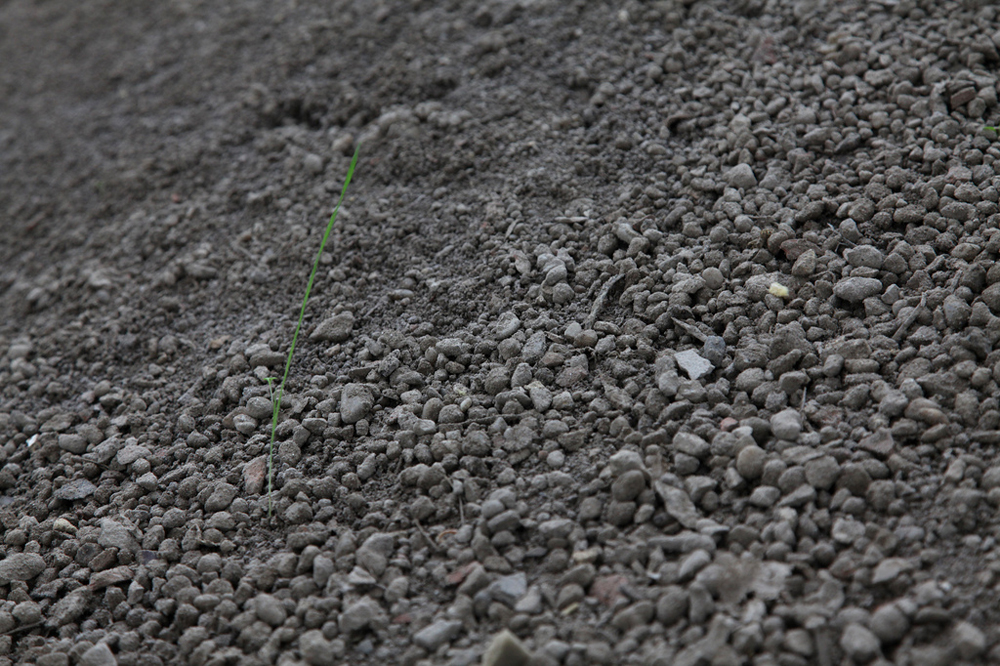

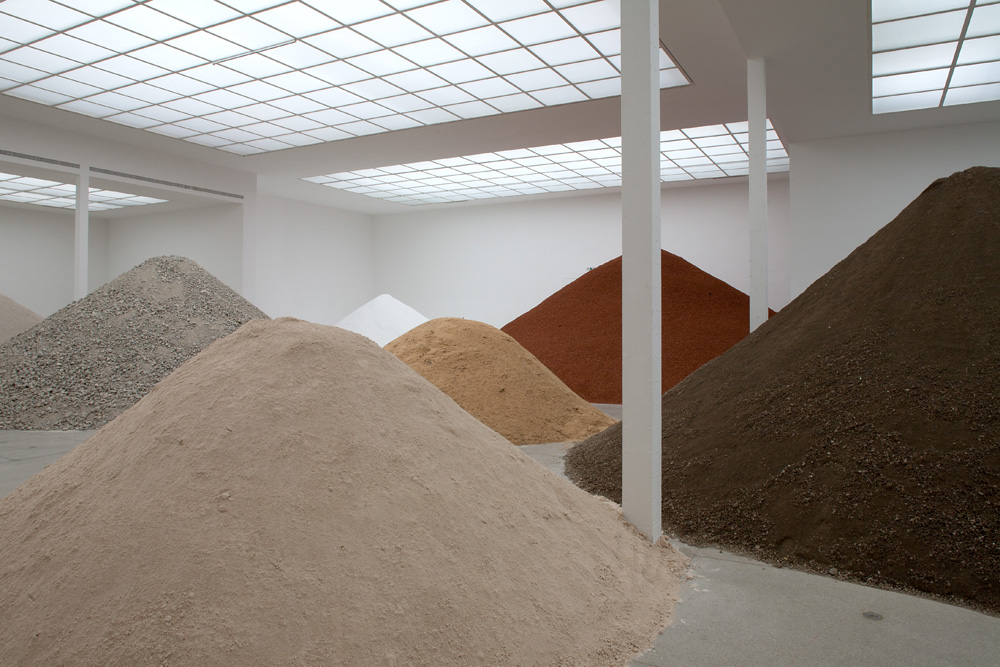
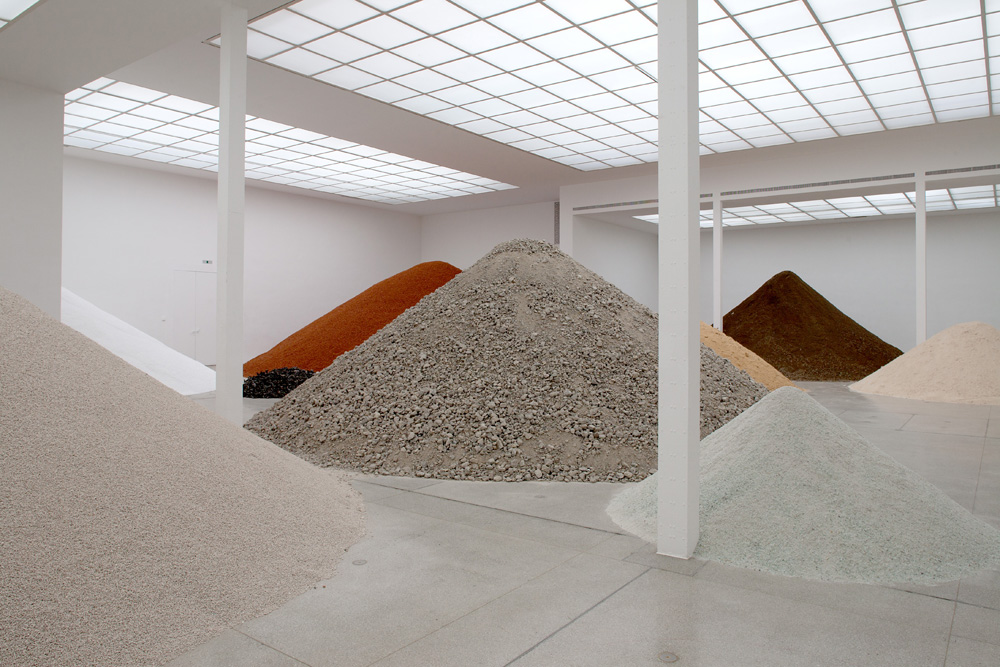
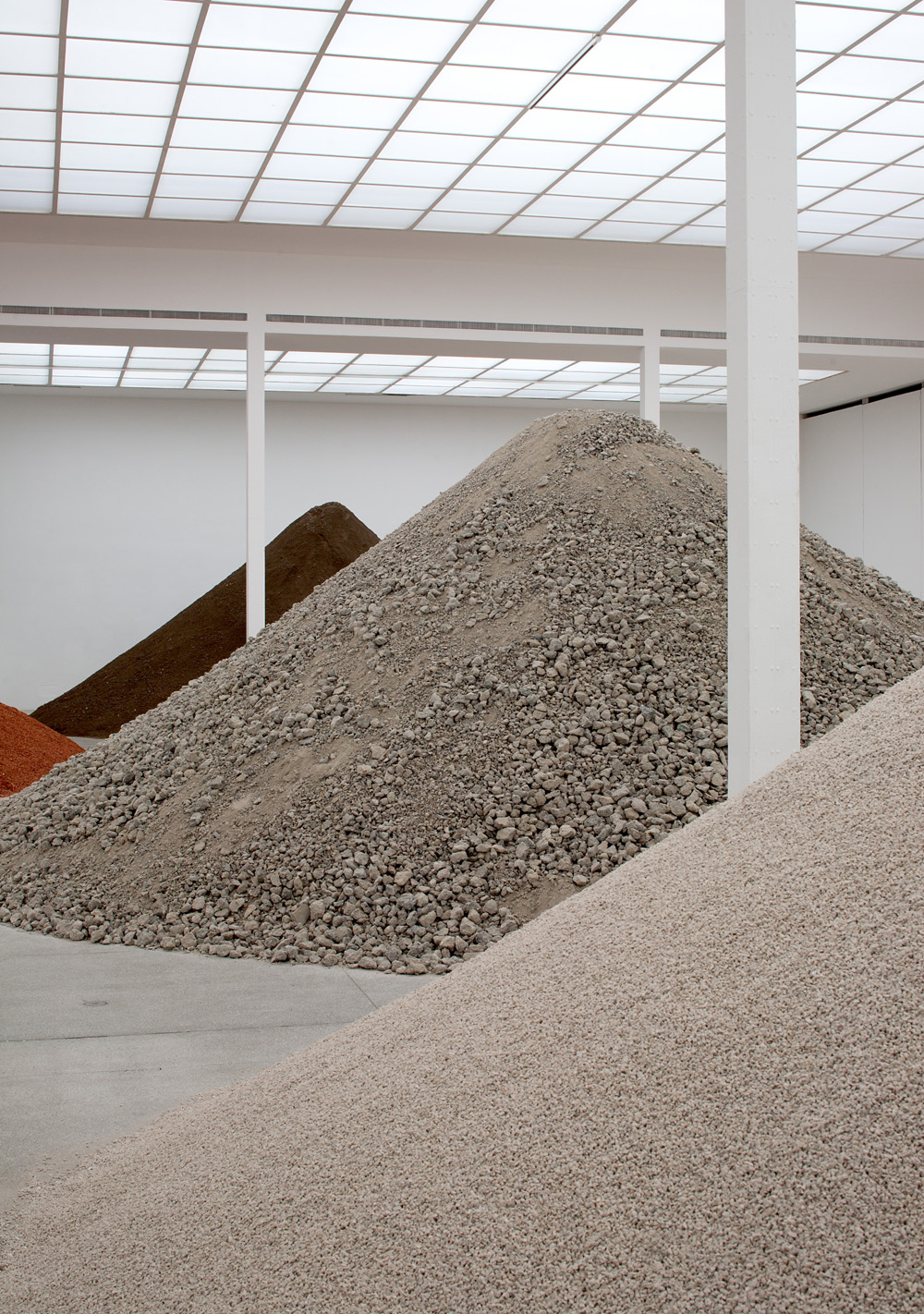
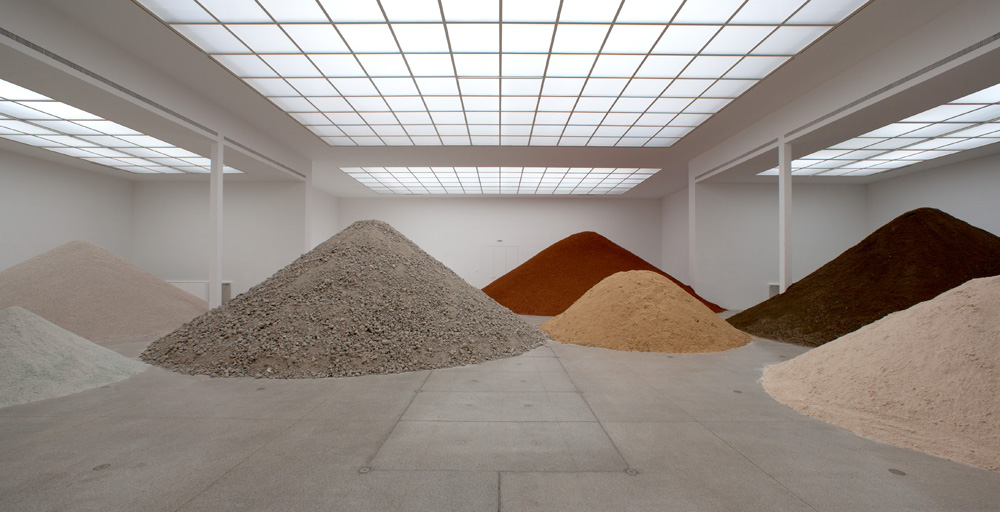
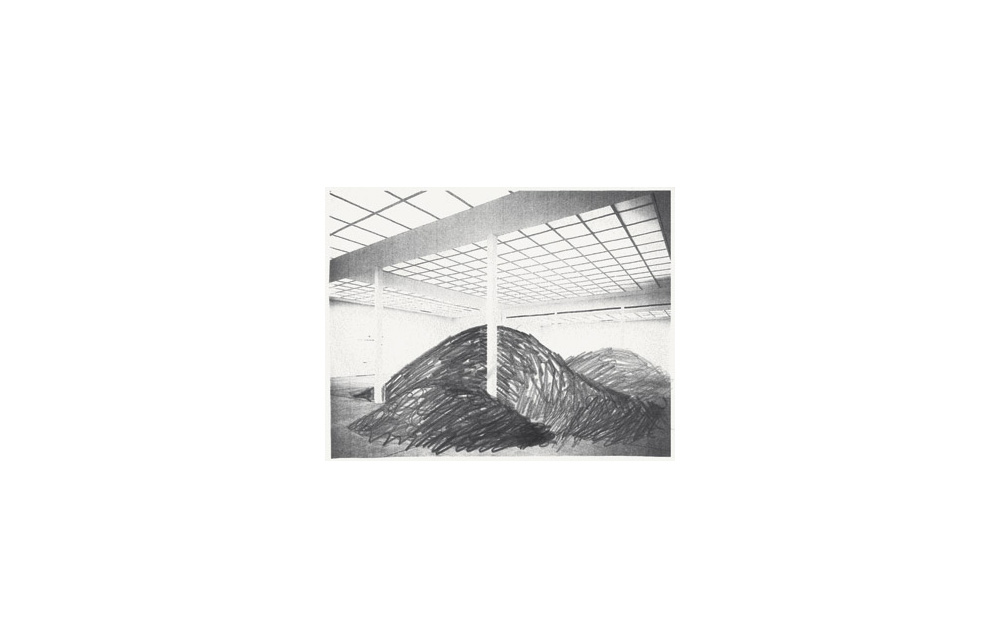

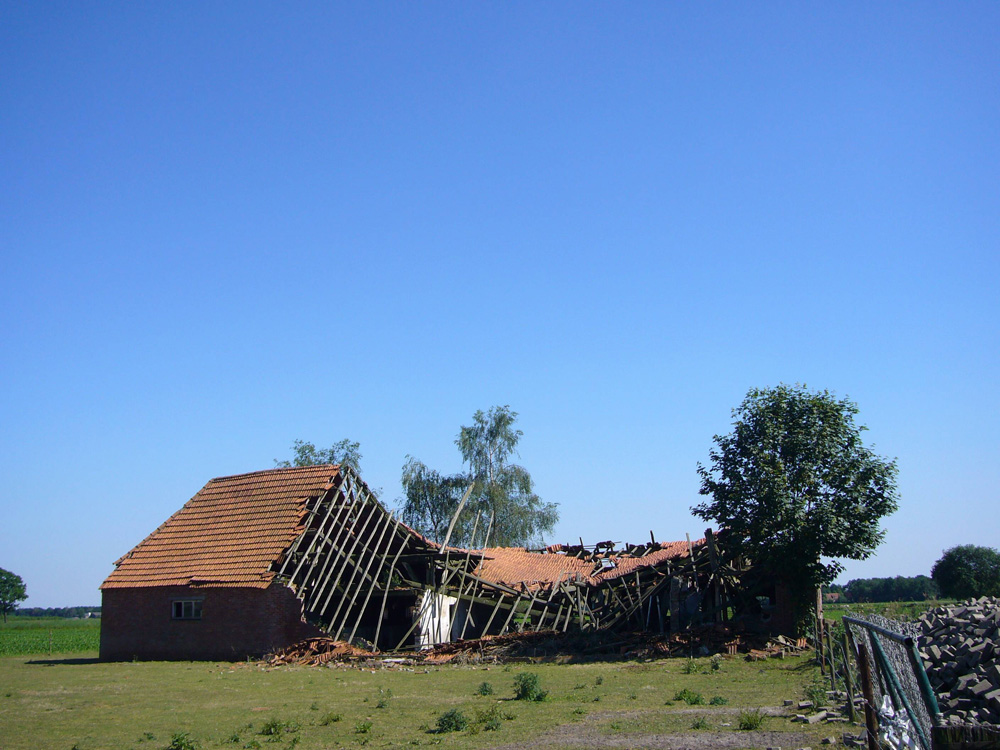
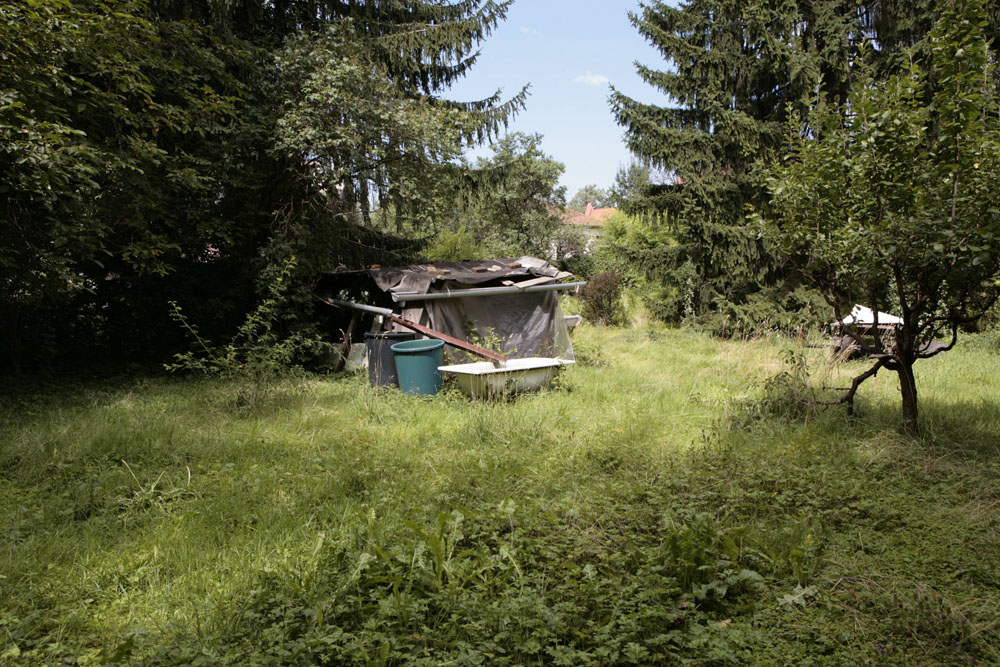

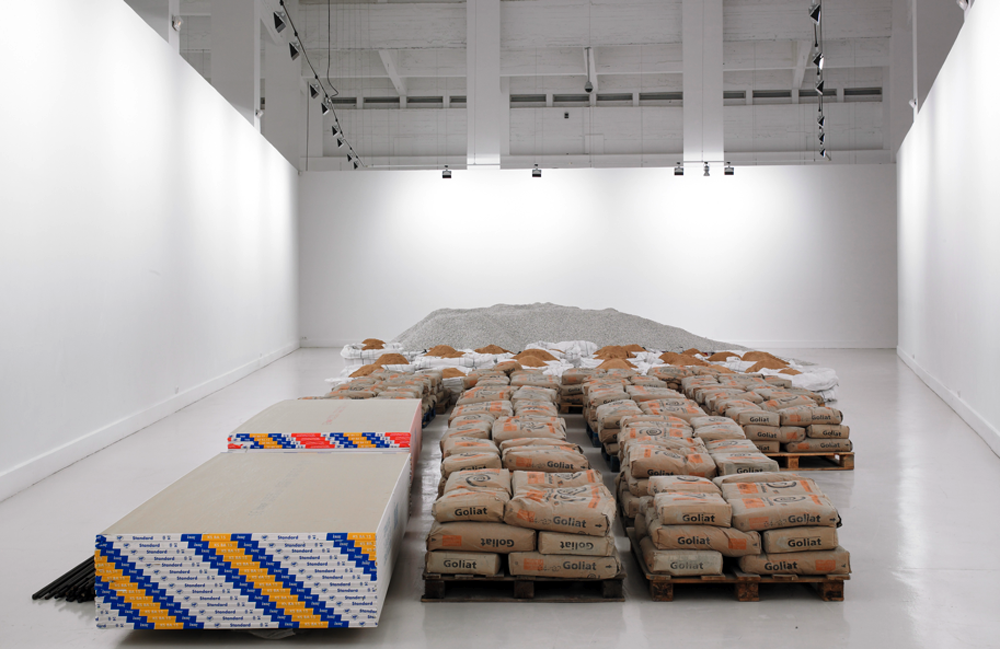
comments are closed !